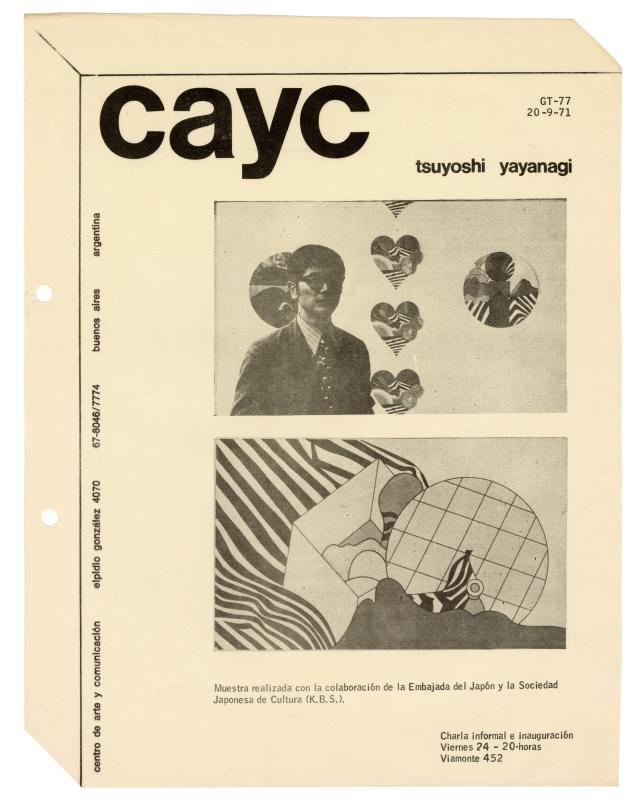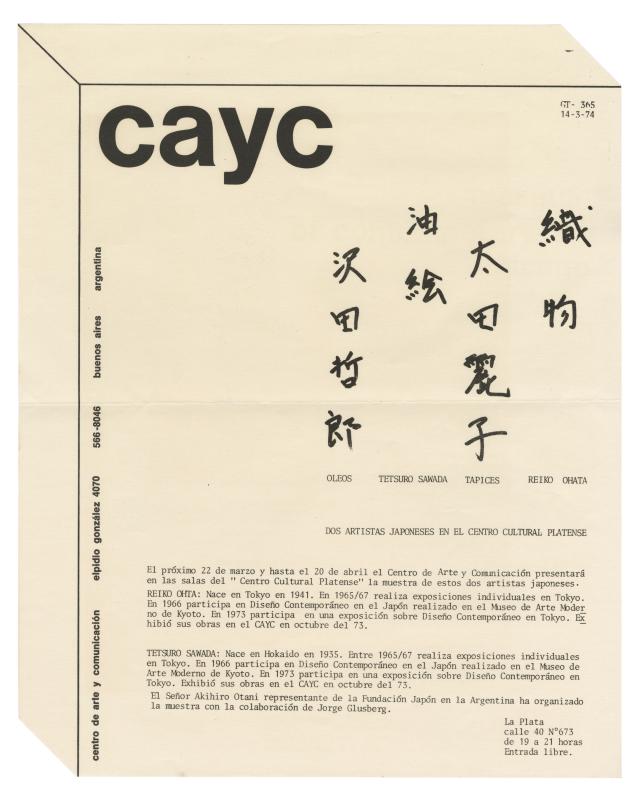Ever since it was founded, the CAYC (Centro de Arte y Comunicación), helmed by the cultural promoter, artist, and businessman Jorge Glusberg, was intended as an interdisciplinary space where an experimental art movement could flourish. The establishment of collaborative networks connecting local and international artists and critics played an important role in this process. The exhibitions shone a light on these exchanges, in which overviews of trends or individual artists provided an introduction to the innovations of international contemporary art and made Argentine and Latin American artists better known on the global scene.
The CAYC had been presenting exhibitions of works by Japanese artists in Buenos Aires for a number of years. See the following: about the printmakers Yayanagi and Kimura (GT-73 [doc. no. 1476304], GT-77 [doc. no. 1476306], and GT- 78 [doc. no. 1476275]); about Reiko Ohata’s tapestries (GT-298 [doc. no. 1476444]); about Jiro Tamamatsu’s photography (GT-362 [doc. no. 1476521] and GT-363 [doc. no. 1476522 ]); and about Tetsuro Sawada’s oil paintings (GT-365 [doc. no. 1476523]).
This newsletter announces the opening of the exhibition Catastrophe Art in Buenos Aires in April 1975. This event was organized by Yutaka Matsuzawa (1922–2006), a pioneer in the field of Japanese Conceptual art. His “catastrophic” concept addressed the “dematerialization of art”—originally proposed in Argentina by the theorist Oscar Masotta in the mid-1960s—and, obviously, the post-atomic awareness concerning the extinction of the human race. Hence the title of this exhibition that showed works by artists who presented different versions of the Diamond Mandala that is part of the Buddhist idea of “approaching Nirvana” and achieving a state of ultimate bliss. In these works, changing and rearranging the positions of the elements creates other mandalas.







